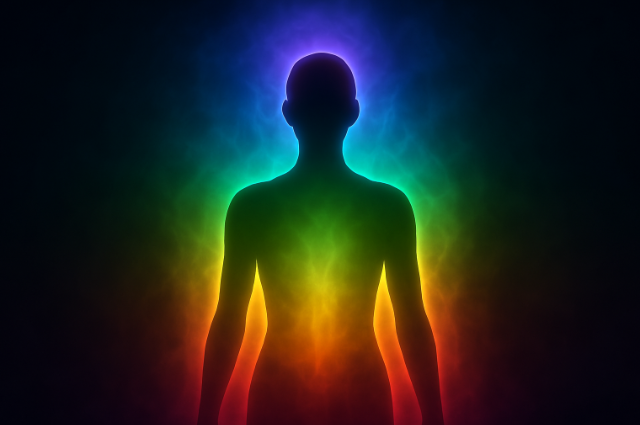
What is the Aura?
The concept of the aura was first popularized by Charles Webster Leadbeater, a former priest of the Church of England and a member of the Theosophical Society.
An aura is an energetic field that surrounds all living beings. It is made up of different colored energies that reflect our thoughts, emotions, moods, and overall state of being. Though invisible to most, some spiritually attuned people claim to see auras.
As we interact with others, our auras engage and intermingle. This exchange can feel uplifting and harmonious, or draining and misaligned. When two people resonate at similar frequencies, the connection feels natural and easy. But when energies clash, the interaction can feel strained, disconnected, or even conflict-driven.
Because of this energetic bonding, it can be difficult to detach when relationships end. The energetic “cord” of connection must dissolve and retract, a process that often takes time.
Different Shades of Aura and Their Meanings
Auras manifest in different colors, each carrying unique significance:
- Red – Groundedness, vitality, passion, and security
- Orange – Creativity, confidence, and joy
- Yellow – Optimism, intellect, and empowerment
- Green – Healing ability, compassion, love, and balance
- Blue – Calmness, intuition, devotion, and peace
- Indigo – Wisdom and connection to one’s higher self
- Violet – Spiritual awakening, mystical insight, and alignment with divine guidance
How to Intentionally Shift the Aura
Several practices can help in shifting or strengthening aura colors:
- Meditation – Calms and centers the mind, body, and spirit
- Energy Healing (Reiki) – Clears energetic blockages
- Yoga & Breathwork – Align chakras and stabilize energy flow
- Affirmations & Visualization – Reframe mindset and energy
- Environment Changes – Influence aura vibrations
- Healthy Lifestyle Choices – Support overall spiritual well-being
Correlation Between Aura and the Soul
The soul, often called Atma, is considered the divine spark within. In some esoteric traditions, the aura is described as a subtle body, reflecting aspects of the soul’s journey.
Mystics and holistic practitioners claim that aura size, color, and vibration offer insight into one’s spiritual state. As Sant Kabir described, the soul radiates with a luminous white light, equivalent to the brilliance of many suns.
Soul colors are said to emerge during astral travel, near-death experiences, or past-life regressions. These colors may symbolize soul age:
- Pink/White – Infant souls
- Yellow – Young souls
- Blue – Mature souls
- Purple – Old or advanced souls
- Dark Purple/Green – Guides and healers
Thus, while the aura reflects temporary energetic states, the soul’s light represents eternal essence.
Aura and Spiritual Growth
The aura is closely linked to the chakra system and one’s energetic vibration. It provides insights into emotional, physical, mental, and spiritual health.
- A balanced, radiant aura indicates harmony and vitality.
- An imbalanced aura highlights areas in need of healing and attention.
Three primary aura shapes reflect spiritual development:
- Square Aura – Primitive, associated with young souls
- Rounded Aura – Transitional, a mix of enlightened and unenlightened colors
- Pointed Oval Aura – Enlightened, representing spiritual maturity
Capturing the Aura
In 1939, Semyon Kirlian discovered that placing an object on photographic paper and applying high voltage produced images of glowing contours. This technique, known as Kirlian Photography, was claimed to capture the aura’s energetic outline.
Soul, Aura, and the Cycle of Life
Nothing is lost in the cycle of birth, death, and rebirth. The soul’s journey is continuous, and its aura accumulates layers from thoughts, actions, and experiences.
According to the Akhand Sutra, if a human soul acquires twenty-two layers of universal knowledge, it can uncover hidden truths of nature and the cosmos. In this way, the aura is seen as the blueprint of the soul’s spiritual evolution.
The aura is more than an energetic glow—it is a reflection of our soul’s state, emotions, and spiritual progress. By nurturing and balancing our aura, we not only improve our well-being but also align more deeply with our soul’s eternal journey.
. . .
REFERENCE:
